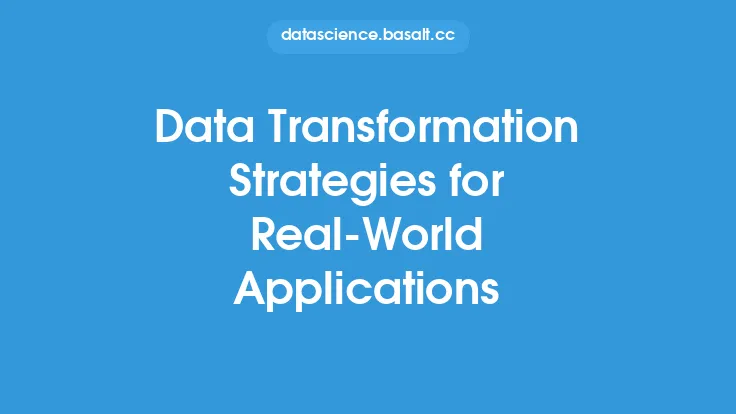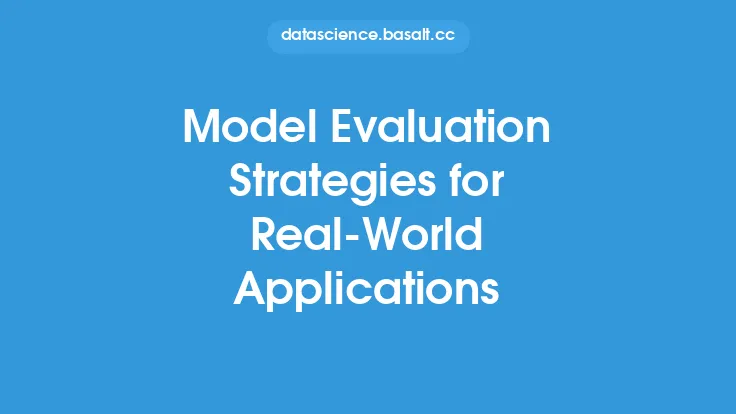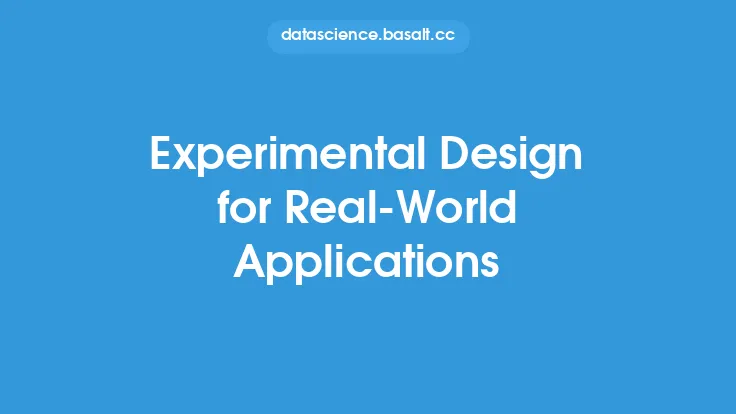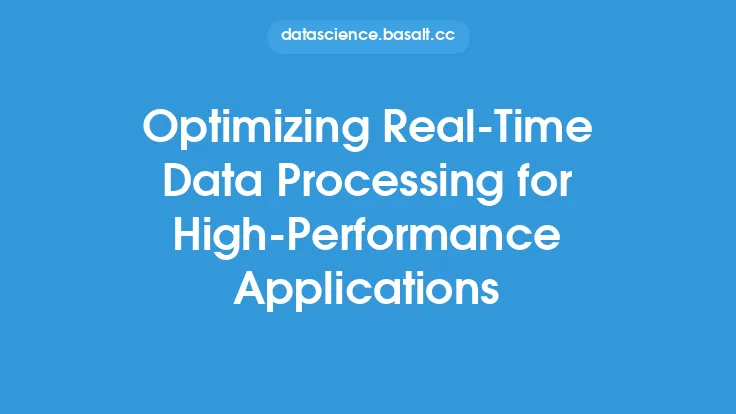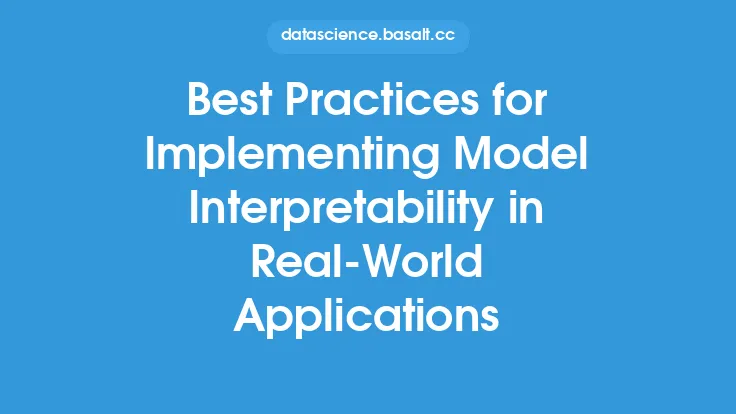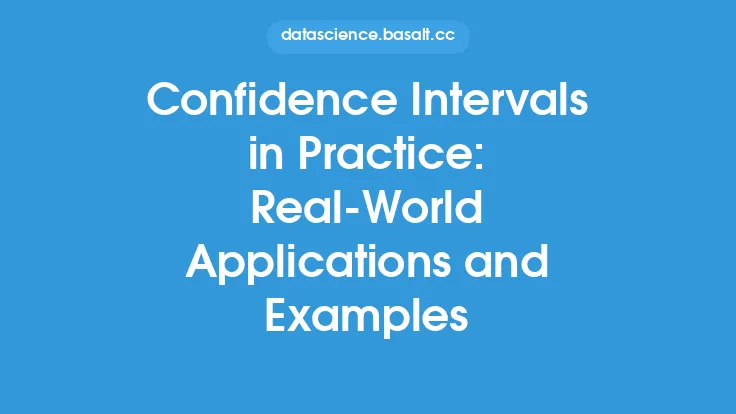Data cleansing is a critical component of data science applications, as it directly impacts the accuracy and reliability of insights generated from data analysis. In real-world data science applications, data cleansing strategies play a vital role in ensuring that data is accurate, complete, and consistent. The goal of data cleansing is to identify and correct errors, inconsistencies, and inaccuracies in the data, which can arise from various sources such as data entry errors, measurement errors, or data integration issues.
Introduction to Data Cleansing Strategies
Data cleansing strategies involve a series of processes and techniques aimed at detecting and correcting data quality issues. These strategies can be broadly categorized into two main types: proactive and reactive. Proactive data cleansing strategies involve preventing data quality issues from arising in the first place, while reactive strategies involve detecting and correcting data quality issues after they have occurred. Proactive strategies include data validation, data normalization, and data standardization, while reactive strategies include data profiling, data auditing, and data correction.
Data Profiling and Auditing
Data profiling and auditing are essential components of data cleansing strategies. Data profiling involves analyzing data to identify patterns, trends, and relationships, as well as to detect anomalies and inconsistencies. Data auditing, on the other hand, involves verifying the accuracy and completeness of data against a set of predefined rules and standards. Data profiling and auditing can be performed using various statistical and data mining techniques, such as descriptive statistics, data visualization, and machine learning algorithms.
Handling Missing Data
Missing data is a common problem in data science applications, and handling it effectively is crucial for ensuring data quality. There are several strategies for handling missing data, including listwise deletion, pairwise deletion, mean imputation, regression imputation, and multiple imputation. Listwise deletion involves deleting cases with missing values, while pairwise deletion involves deleting cases with missing values only for the specific analysis being performed. Mean imputation involves replacing missing values with the mean of the observed values, while regression imputation involves using a regression model to predict missing values. Multiple imputation involves creating multiple versions of the dataset, each with a different set of imputed values.
Handling Duplicate Data
Duplicate data is another common problem in data science applications, and handling it effectively is crucial for ensuring data quality. There are several strategies for handling duplicate data, including duplicate detection, duplicate removal, and data merging. Duplicate detection involves identifying duplicate cases, while duplicate removal involves deleting or merging duplicate cases. Data merging involves combining duplicate cases into a single case, using techniques such as data aggregation or data consolidation.
Data Standardization and Normalization
Data standardization and normalization are critical components of data cleansing strategies. Data standardization involves converting data into a standard format, such as converting date fields into a standard date format. Data normalization involves scaling data to a common range, such as converting numeric fields into a standard range. Data standardization and normalization can be performed using various techniques, such as data transformation, data aggregation, and data feature scaling.
Data Validation and Verification
Data validation and verification are essential components of data cleansing strategies. Data validation involves checking data against a set of predefined rules and standards, such as checking for invalid or out-of-range values. Data verification involves verifying the accuracy and completeness of data against a set of predefined rules and standards, such as verifying the accuracy of data against a reference dataset. Data validation and verification can be performed using various techniques, such as data profiling, data auditing, and data testing.
Data Quality Metrics and Monitoring
Data quality metrics and monitoring are critical components of data cleansing strategies. Data quality metrics involve measuring the accuracy, completeness, and consistency of data, using metrics such as data accuracy, data completeness, and data consistency. Data monitoring involves tracking data quality issues over time, using techniques such as data logging, data tracking, and data alerting. Data quality metrics and monitoring can be performed using various tools and techniques, such as data quality software, data monitoring software, and data analytics platforms.
Best Practices for Data Cleansing
Best practices for data cleansing involve following a set of guidelines and principles for ensuring data quality. These best practices include data validation, data normalization, data standardization, data profiling, data auditing, and data monitoring. Additionally, best practices for data cleansing involve using data quality metrics and monitoring to track data quality issues over time, and using data cleansing strategies to prevent data quality issues from arising in the first place.
Conclusion
In conclusion, data cleansing strategies are critical components of real-world data science applications. These strategies involve a series of processes and techniques aimed at detecting and correcting data quality issues, and ensuring that data is accurate, complete, and consistent. By following best practices for data cleansing, and using data quality metrics and monitoring to track data quality issues over time, organizations can ensure that their data is of high quality, and that their data science applications are reliable and accurate.
